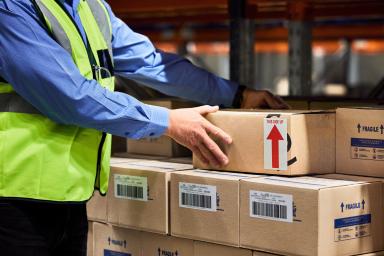Capital Allowances for scaling up - plant and machinery allowances
These items are called plant and machinery and can include vehicles like cars, fixtures such as kitchens or bathrooms, air conditioning systems, or CCTV.
The associated capital expenditure can place a significant burden on your finances.
However, fortunately, capital allowances provide a valuable opportunity to offset these costs.
Understanding how to claim these allowances effectively and the common pitfalls can make a significant difference in avoiding errors in your claims.
HMRC has published plant and machinery allowance guidelines to help business owners avoid errors when claiming capital allowances on these items.
Read on to discover common business errors in claiming plant and machinery allowances and how to avoid them.
What are plant and machinery capital allowances?
Capital allowances for plant and machinery allow businesses to deduct a portion of their expenditures from their taxable profits.
This is particularly helpful for growing companies because it can lessen the financial burden of big investments.
Businesses can use these allowances to improve their cash flow and put more money back into growth.
There are several types of allowances available:
- Annual Investment Allowance (AIA) – lets businesses deduct the full cost of qualifying items up to a set yearly limit, giving immediate tax savings. AIA makes it easier to claim capital allowances and many businesses find this their best option. The AIA expenditure limit is currently set at £1m, and has been since 2019
- Full Expensing – allows businesses to deduct the full cost of qualifying new assets from their taxable profits in the year of purchase. This option might be most suitable for businesses who have exceeded the AIA limit
- Writing Down Allowances – for costs not fully covered by AIA or Full Expensing, businesses can gradually deduct a portion of the asset’s value over time
- 100% first year allowances – available for some types of plant and machinery and enables businesses to claim a full deduction in the year of purchase. It’s worth noting that, unlike AIA or full expensing, this allowance can include zero emission business vehicles.
Understanding these allowances and how they apply to different expenditures is key to maximising tax savings for your business.
Find out more about the allowances that could apply to your business and what you can claim on the government’s website.
What challenges do businesses face when claiming capital allowances?
Businesses often find claiming plant and machinery allowances challenging, so you’re not alone if you run into difficulties.
Broadly, you can usually claim capital allowances on items you keep making use of long term in your business, this is capital expenditure.
The rules on what is or is not capital expenditure can become confusing so, if you are unsure if a purchase is capital expenditure, instead of trying to handle it all alone, think about speaking to your tax adviser who can explain what you need to know.
Keeping detailed records is important for proving your claims and dealing with audits.
Read HMRC’s guidance about keeping digital records for tax purposes.
Also, consider whether you need to update your knowledge of tax laws or seek guidance from a professional.
You can visit the ICAEW’s Business Advice Service (BAS) to connect with regulated accountants.
The service provides UK businesses with a free initial consultation of up to one hour with a chartered accountant.
Common mistakes when claiming plant and machinery capital allowances
Before making a claim, it’s important to be aware of some typical business mistakes so that you can avoid or mitigate them.
Items of plant or machinery that are leased rather than owned are not usually claimable, but businesses should, in most cases, be able to claim for any equipment that is obtained via hire purchase.
Another area where businesses can have trouble is attempting to use capital allowances for buildings and structures which are not classed as plant or machinery by HMRC.
Whilst claiming for these assets is not allowable via plant and machinery capital allowances, businesses should instead look at the Structures and Buildings Allowance.
If the premises you wish to claim for contains fixtures, there are special rules to follow.
A third area where mistakes are often made is with regard to disposals – when a business sells or otherwise disposes of an asset for which you have claimed an allowance in the past.
When you dispose of the asset you must account for its disposal value.
Errors can be made in whatever industry you operate in.
Recognising these pitfalls could help you stay compliant with HMRC guidelines.
Misalignment with accounting practices
It’s common for businesses to match their claims with accounting categories without checking their compliance with tax regulations.
So, always make sure your assets are eligible and qualify for the capital allowance you are claiming.
You can check the facts and context of each expense using the capital expenditure tax rules.
Timing discrepancies
Mistakes can happen if the expenditure date doesn’t match the correct accounting period.
It’s important to ensure your claims are filed for the correct period to avoid problems.
Incorrect asset classification
Carefully assess whether an asset meets the criteria for capital allowances, as not all assets qualify as plant or machinery.
Doing this can save you time and prevent mistakes in classification.
For example, a company might wrongly classify some parts of an assembly line, such as structural parts, as qualifying assets when they are not.
Knowing best practices in making claims can also make the entire process more efficient.
Good practice for making capital allowance claims
Consider the following ideas to claim your capital allowance correctly and avoid errors.
1. Conduct thorough research
Before making a claim, understand the eligibility criteria and specific allowances available for different types of assets.
This basic understanding will help you make better decisions and ensure you get the most benefit from your claim.
2. Make the most of experts
Talking to a tax adviser can help you understand complicated issues and make sure your claims follow the latest rules.
Their knowledge can be invaluable for understanding taxes for your business.
3. Maintain comprehensive documentation
Effective record-keeping can be essential.
Consider documenting detailed information about each claim, including asset names, acquisition dates, costs, and the type of allowance claimed.
Also, consider making sure they are readily available for review when needed.
This will help you when it comes to preparing accurate claims and also help HMRC understand your submissions.
4. Keep effective records
As with other aspects of your business, it’s a good idea to keep records of what you have claimed for via capital allowances.
Your records might include:
- acquisition records – keep detailed records of all assets you buy, including names, acquisition dates, and costs for proof
- usage tracking – for assets used in both business and personal contexts, document the split in usage to justify the claimable portion
- disposal records – keep documentation of any asset disposals, including dates and values, to adjust claims appropriately and make sure they are accurate.
It’s a good idea to include comprehensive details such as writing down allowance pools, new acquisitions, disposal values, and any balancing charges.
Also include details of how you got your plant or machinery – for example, did you buy it yourself, or was it given to you by someone else?
Keep detailed records if you use an asset for business and other purposes.
This helps you divide the expenses for tax claims fairly.
For instance, you can track your van’s business miles
Keeping detailed records of any capital allowances you claim for is a good idea.
This makes it easier for HMRC to review your claims and can lower the chance of them asking for more information later.
HMRC have developed a handy guide to help businesses make sure their record keeping is up to scratch.
Read about tax relief available for smaller businesses.
Have you made an error in your plant and machinery claim?
If you make a mistake in a previous plant and machinery claim, you can usually amend it online within a year of the filing deadline.
If not, contact HMRC support.
It’s best to address the mistake as soon as possible to avoid penalties or interest.
Remember, to find more detailed information about how to make a successful claim, read HMRC’s help to avoid errors in claims for plant and machinery allowances.
Disclaimer: We make reasonable efforts to keep the content of this article up to date, but we do not guarantee or warrant (implied or otherwise) that it is current, accurate or complete. This article is intended for general information purposes only and does not constitute advice of any kind, including legal, financial, tax, or other professional advice. You should always seek professional or specialist advice or support before doing anything on the basis of the content of this article.
Neither British Business Bank plc nor any of its subsidiaries are liable for any loss or damage (foreseeable or not) that may come from relying on this article, whether as result of our negligence, breach of contract or otherwise. “Loss” includes (but is not limited to) any direct, indirect, or consequential loss, loss of income, revenue, benefits, profits, opportunity, anticipated savings, or data. We do not exclude liability for any liability which cannot be excluded or limited under English law.
Tags related to this content:

Making business finance work for you: Expanded edition
Our Making business finance work for you: Expanded edition is designed to help you make an informed choice about accessing the right type of finance for you and your business.



